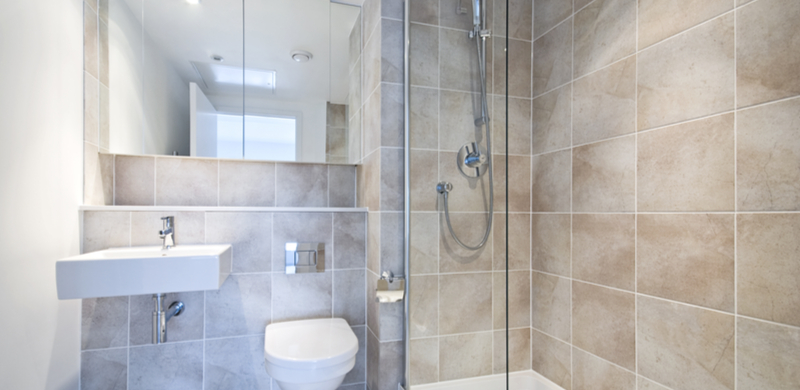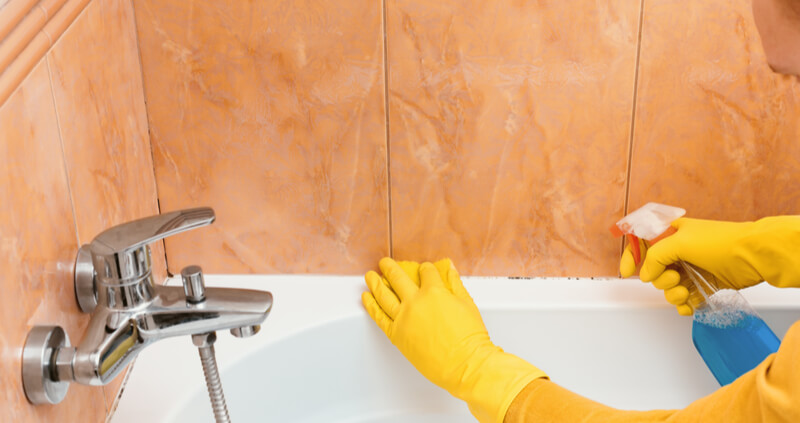
Mould is a type of fungus that thrives in damp areas and reproduces by way of spores that are carried in the air. In the natural environment, mould plays an important role by breaking down dead organic matter such as leaves, plants and trees. Indoors, mould can thrive in damp spaces such as wetrooms and bathrooms, especially if they are poorly ventilated.
How does mould affect your body?
Moulds produce allergens which are substances that can cause an allergic reaction in some people. Symptoms of an allergic reaction to moulds may include sneezing, eye irritation, congestion and a runny nose, skin rashes or dermatitis. Moulds can also cause asthma attacks.
Reactions to mould can be immediate or delayed, meaning that just because you aren’t affected right away, problems can still develop over time.
How to Prevent Mould Growth in Wetrooms and Bathrooms
1. Ventilate Properly
Mould thrives in damp, warm environments. Circulating air is an effective means of removing moisture from the atmosphere and preventing mould growth. Investing in an extractor fan will allow air to circulate, whilst drawing out the moisture-heavy air.
Remember to leave your extractor fan on until the moisture is dispersed, even if this is after your shower has ended.
There are strict regulations on ventilation in wetrooms and bathrooms, which require certain ventilation practices to be in place. For kitchens, utility rooms, bathrooms or sanitary accommodation, the Building Regulations state that extract ventilation should be in place, either continuous or intermittent.
2. Clean Your Wetroom Regularly
The longer you leave it between cleaning your wetroom, the more likely it is that mould will grow. Try and clean your bathroom or wetroom at least once a week and get rid of any mould as soon as you spot it.
By removing excess damp and cleaning your wetroom regularly, you ensure that any dust and mould spores that haven’t settled are removed. You can find out more information about wetroom care and maintenance on our blog.

3. Ensure Proper Sealing
Make sure your wetroom is fitted and waterproofed by a professional using high quality materials. Weak and poorly made seals between tiles, around installed products such as toilets and showers, or near doors and windows, become breeding grounds for mould and bacteria. Weak seals are also prone to breaching or deterioration over time, resulting in leaks.
4. Remove Moisture
In its early stages of growth, mould is rather delicate and can’t withstand being pushed and pulled. A bathroom fan will knock mould off its rhythm by making it hard to grow. The fan will suck up excess moisture that would normally pool in your bathroom, removing it before it can form perfect pockets for mould to grow in.
A dehumidifier takes the moisture from the air and collects it as water. If you leave one running after you’ve used your wetroom, it will greatly reduce condensation.
Good ventilation, effective management of standing water and the use of high quality materials, are key to preventing condensation and mould growth in a wetroom. Tackle these issues when you design a wetroom and you’ll create a healthy wetroom environment.
How to Remove Mould from Your Wetroom
Local cases of mould, such as after a spell of not using a wetroom and having a small patch of mould appear, can be remedied with a DIY method. Purchase cleaning sprays with mould killing properties to help remove all traces of mould from your bathroom before they take hold.
For larger cases, or ones that won’t go away, it’s best to call an expert, as this may be a sign of a leaky pipe or a more serious problem.
Speak to CCL Wetrooms about your wetroom needs
Are you looking to install a wetroom but are worried about mould and damp? Speak to CCL Wetrooms and we can discuss how proper installation and correctly specified wetrooms negate all these worries.









